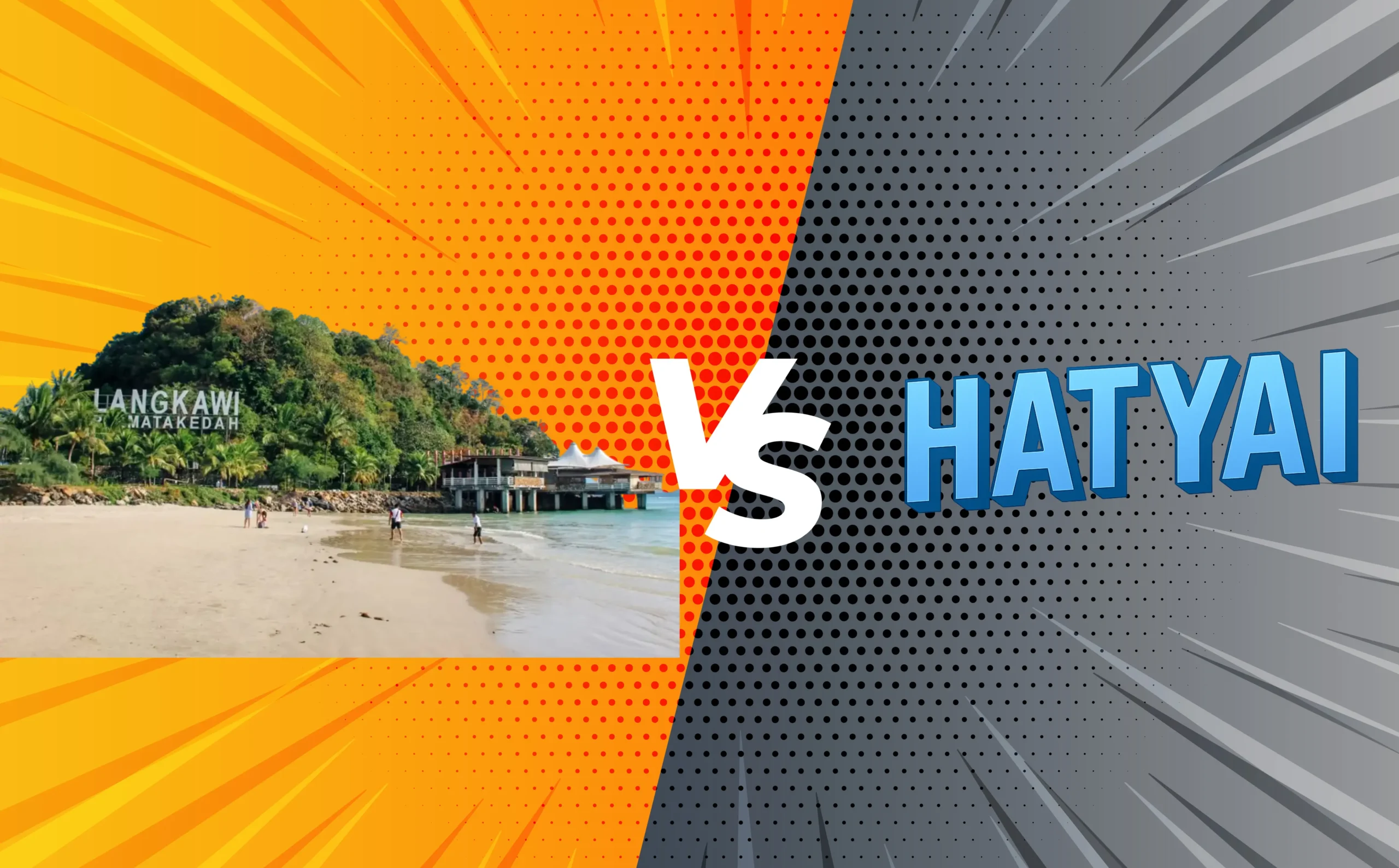Let’s be honest: most Malaysians buy insurance the same way they buy durian, someone recommends it, and we just go along. But here’s the problem: when it comes to protecting your health, income, or family, guesswork can get expensive.
Maybe you’re overpaying for something you don’t need. Maybe you’re undercovered and don’t even know it. And maybe, like thousands of others, you’re stuck with a plan sold by a friend that sounds good… until you try to claim it.
This guide breaks through the noise. No jargon. No scare tactics. Just straight talk and smart strategies to help you figure out:
- What coverage you actually need
- What you can safely skip
- How to avoid overspending
In 2025, insurance isn’t optional. But overpaying? That definitely is.
The Real Picture: Insurance Coverage in Malaysia
Despite all the social media ads and friendly agents, a massive number of Malaysians are still unprotected, or misprotected.
- Only 58.6% of Malaysians have life insurance. That means nearly 4 in 10 are completely uninsured (LIAM).
- Takaful? Still hovering around 20% penetration, with growth slowing due to rising living costs (BNM Annual Report 2024).
- Among the B40, it’s even more serious, just 1 in 4 have any form of coverage.
Bottom line: there are plenty of products on the market. The real issue is knowing what to choose, and what fits your life and budget.
New: What Insurance Should You Get, Based on Life Situation
Here’s a simple guide based on your stage of life and lifestyle:
Young & Single (20s–early 30s)

Must-haves:
- Basic medical card (RM90–RM150/month)
- Term life only if you have debts or support your family
Skip: ILP, education plans, endowment savings
Pro tip: Use i-Lindung to get insured using your EPF Account 2
Married or Starting a Family

Must-haves:
- Term life for both partners (aim for 10x annual income)
- Family medical plan with co-pay
- Critical illness (CI) rider if budget allows
Optional: Takaful savings rider (if you’re disciplined with budgeting)
Pro tip: If only one partner is working, prioritise life insurance for the breadwinner
Pre-Retirement (40s–50s)
Must-haves:
- Review existing life cover: still needed?
- Upgrade medical card if limits are outdated
- CI plan if not yet covered
Optional: ILP or annuity products only if you understand the costs and terms
Pro tip: Don’t cancel old policies just to get newer ones. You might lose guaranteed terms.
Retirees (60+)
Must-haves:
- Maintain medical coverage (consider co-pay plans to reduce premiums)
- Minimal life insurance unless used for estate planning
Pro tip: Check if you qualify for senior repricing protections under BNM rules
Don’t Just Compare Prices, Compare What You Actually Get
If you’re just comparing premiums, you’re doing it wrong. Here’s what smart buyers look at:
| Plan Feature | What to Watch | Why It Matters |
|---|---|---|
| Annual Limit | RM100k? RM200k? Unlimited? | Low limits may not cover serious hospital bills |
| Room & Board | RM150? RM250? As charged? | Determines comfort level + daily cost cap |
| Deductibles / Co-pay | RM500? 10%? None? | Affects your out-of-pocket when you claim |
| Critical Illness Payout | Fixed sum or tiered? | Ensures you can afford recovery, not just bills |
| Coverage for Pre-existing | After how many years? Any loading? | Helps you avoid claim rejections |
Your move: Don’t just buy the cheapest plan. Compare benefits side-by-side and ask: “Will this still protect me when I actually need it?”
Inside the Fine Print: Real Policy Pitfalls That Cost Malaysians Money
It’s not just what you buy. It’s what you don’t know you bought. Here are the most common traps:
1. You didn’t check the exclusions.
Example: Pregnancy-related costs, mental health, or special tests may not be covered. Always read the fine print.
2. You thought all hospital bills are 100% covered.
Reality: Your room limit is RM150. You were hospitalised in a RM300/night room. You pay the difference for every day.
3. You didn’t realise there’s a waiting period.
Most policies won’t let you claim for the first 30 to 120 days (especially for illness). Don’t find out the hard way.
4. You didn’t check what “lifetime limit” means.
Some plans cap how much you can claim in total, over your life. If you exhaust it, the policy ends.
5. You bought ILP for protection, but it’s leaking money.
Every year, more of your premium goes to rising insurance charges. If your investment fund underperforms, the policy may lapse unless you top up.
Your move: Always ask for the Product Disclosure Sheet (PDS). If the agent can’t explain every line.. pause and compare with others.
Why Costs Are Rising (And Why It Matters to You)
Let’s break it down:
- Medical inflation in Malaysia hit 15% in 2024, that’s one of the highest in Asia (InsuranceAsia).
- Claims are shooting up too, RM15.4 billion paid out in 2023 for life insurance alone.
- And guess who’s paying for it? Yup. Policyholders.
Good news: BNM has stepped in. They’ve capped most medical plan premium hikes to under 10% and made co-payment plans mandatory for better affordability.
Takaful vs. Conventional: Don’t Choose Blindly
You’ve seen both terms in insurance ads, but beyond the religious context, what’s actually different? And more importantly, which one should you pick?
| Feature | Takaful | Conventional Insurance |
| Ownership | Fund owned collectively by participants | Owned by shareholders |
| Surplus/Profit Sharing | May be returned to participants | Profits go to shareholders |
| Investment Approach | Only Shariah-compliant funds | May include interest-based assets |
| Regulation | Islamic Financial Services Act | Financial Services Act |
So, what does this mean for you?
Choose Takaful if:
- You want a policy aligned with Islamic principles (no riba’, no gharar)
- You like the idea of cooperative risk-sharing and possible surplus returns
- You’re comfortable with providers that may focus more on ethical screening
Choose Conventional Insurance if:
- You want a wider selection of companies and products
- You’re not particular about the Shariah-compliance of investment funds
- You want access to legacy players with longer track records (e.g., Allianz, Prudential)
Cost-wise, both are competitive. In fact, many Takaful products are similarly priced or even cheaper, especially online plans.
Bottom line: Pick the one that aligns with your personal values and offers the best plan for your budget and needs. Don’t overthink the label, focus on coverage, exclusions, and total value.
Investment-Linked Plan (ILP) vs. Term Life: The Most Expensive Mistake You Might Make
Here’s the trap: You’re told, “This plan protects you and helps you grow your savings!”
Sounds great, right? Until you realise:
- You’re paying more
- Your returns aren’t guaranteed
- And your premiums increase as you age
Term Life
- Pure protection. No bells, no strings.
- Fixed premiums, big payout.
- Best for those with dependents or debts.
Investment-Linked Plan (ILP)
- Combines insurance with unit trust investments
- You bear the risk, and fees eat into returns
- Premiums can balloon over time
Unless you truly understand the risks, term is usually the smarter, cheaper choice.
How Much Insurance Should You Actually Pay?
Let’s make this easy:
- Basic medical card: RM90–RM150/month
- Term life: From RM11.17/month (yes, really)
- Family Takaful: From RM28.54/month
Can’t afford it all? Start small. Just avoid going without any coverage. Use co-pay plans to slash premiums (some drop by 68%).
What If You’re B40 or Just Starting Out?
Good news, there’s help:
- i-Lindung (via EPF): Use your Account 2 to buy life/CI plans.
- i-MULA 50: Government will subsidise RM50 off your plan.
- Skim Perubatan MADANI: Free GP visits for selected B40 recipients.
- PeKA B40: Health screening and support if you’re aged 40+.
Don’t Buy Without Asking These Questions
- What exactly does this policy cover, and exclude?
- How much am I paying vs. how much am I protected for?
- Are there waiting periods or hidden co-payments?
- Will the premium stay fixed?
- Is this something I actually need right now?
Final Word: Don’t Just “Have Insurance”, Have the Right Insurance
Anyone can sell you a plan. But only you can choose one that makes financial sense. So stop treating insurance like a yearly gym membership, forgotten and barely used.
Here’s what to do today:
- Review your current policy
- Identify gaps (e.g., no medical card? no CI cover?)
- Compare actual quotes on sites like RinggitPlus or iBanding
- Don’t delay. Premiums rise with age.
It’s not about spending more. It’s about spending smart.





